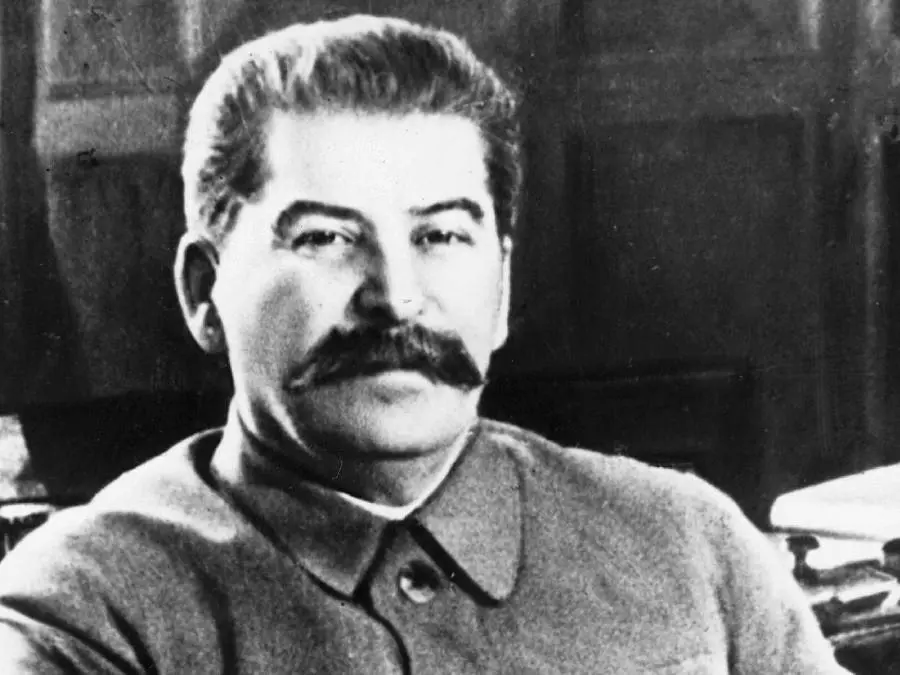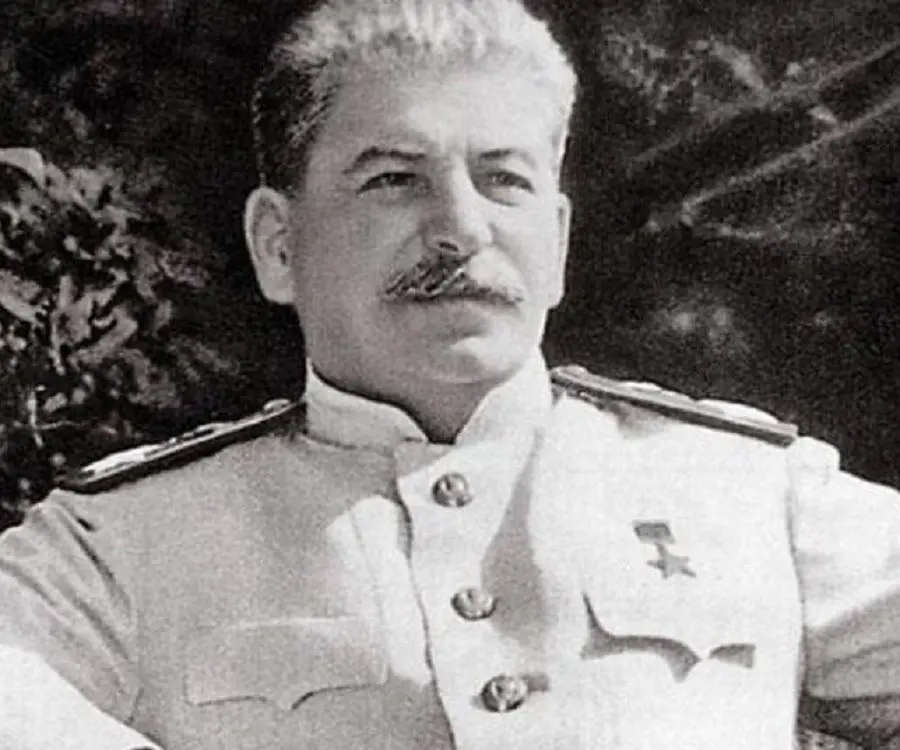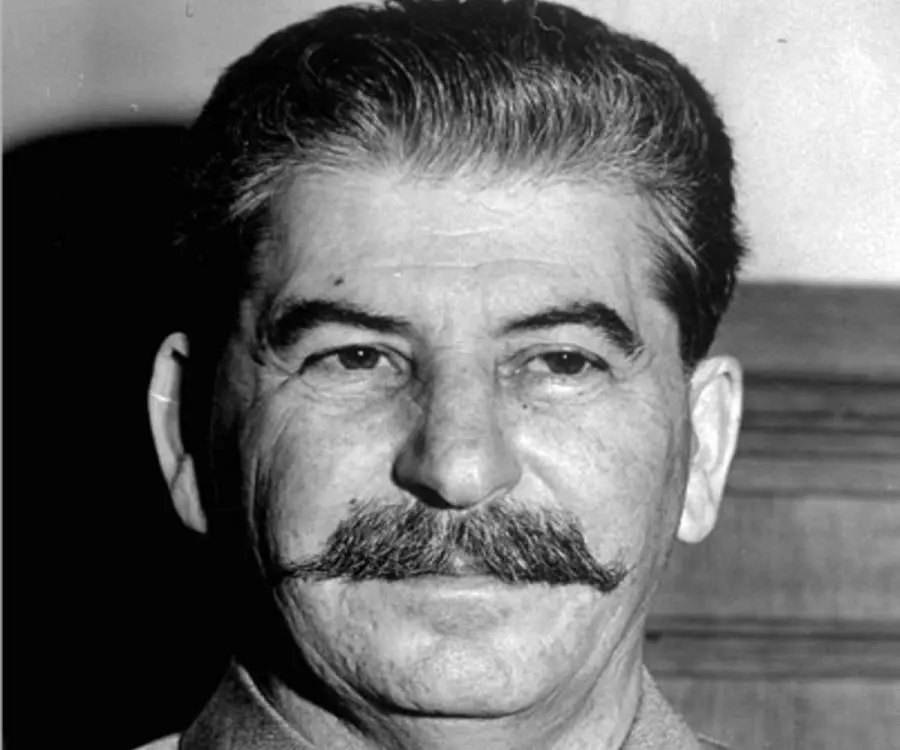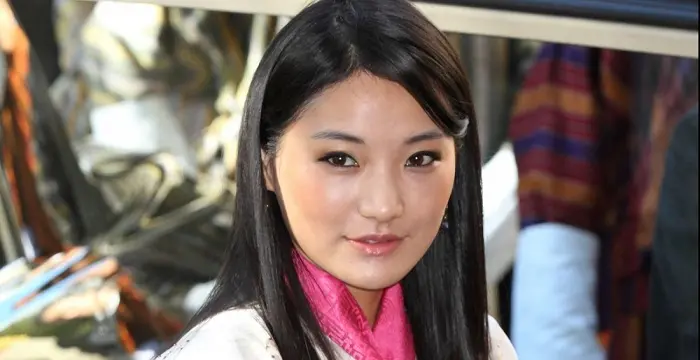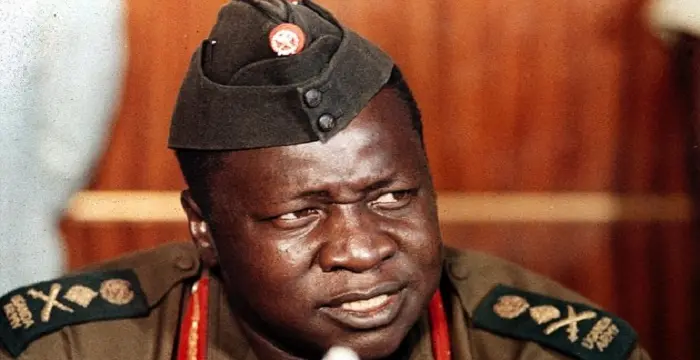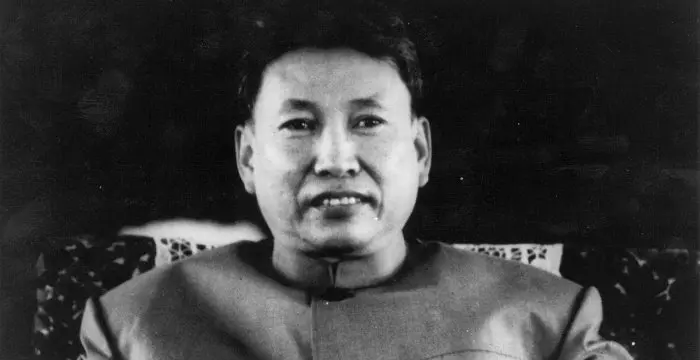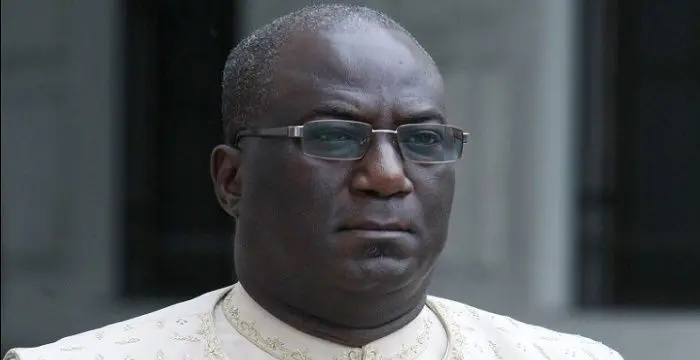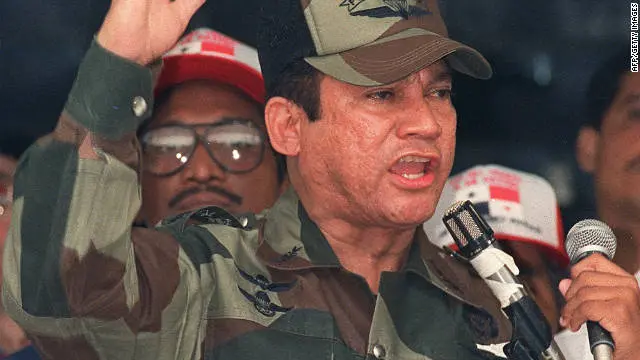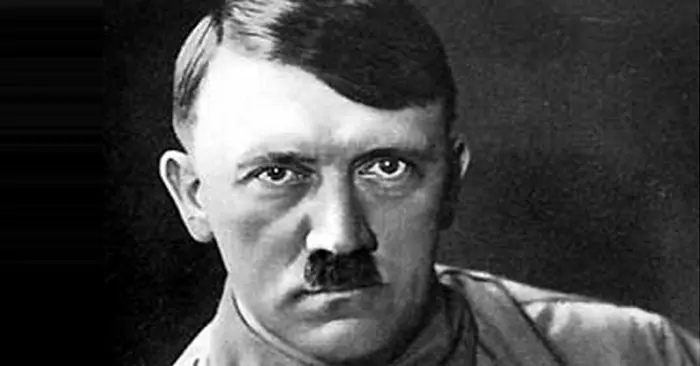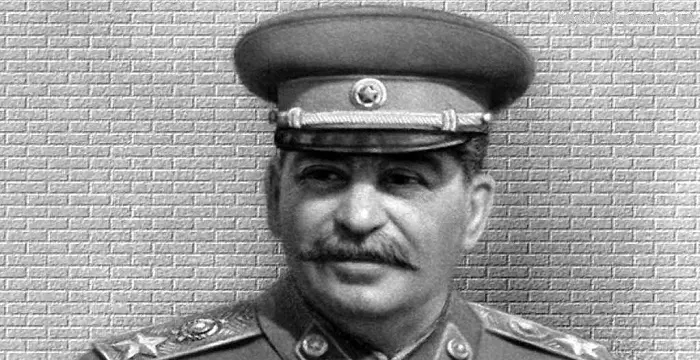
Joseph Stalin - Communist Revolutionary, Facts and Childhood
Joseph Stalin's Personal Details
Joseph Stalin was the dictator of the Union of Soviet Socialist Republics (USSR)
| Information | Detail |
|---|---|
| Birthday | December 18, 1878 |
| Died on | March 5, 1953 |
| Nationality | Russian |
| Famous | Historical Personalities, Political Leaders, Dictators, Communist Revolutionary, Ruler of Former Ussr |
| Spouses | Nadezhda Alliluyeva |
| Childrens | Svetlana Alliluyeva |
| Universities |
|
| Birth Place | Gori, Georgia |
| Political Ideology | Communist Party of the Soviet Union |
| Gender | Male |
| Father | Besarion Jughashvili |
| Mother | Ketevan Geladze |
| Sun Sign | Sagittarius |
| Born in | Gori, Georgia |
| Famous as | Communist Revolutionary & Ruler of former USSR |
| Died at Age | 74 |
Joseph Stalin's photo
Who is Joseph Stalin?
Joseph Vissarionovich Stalin, the controversial Russian dictator, was born in Georgia in the Russian Empire in the later part of the nineteenth century into a poor family. Drawn early in his life to the ideals of Vladimir Lenin, he joined Bolsheviks almost at its inception and very soon made a place for himself with his organizational capability, playing an important role during the October Revolution. Later as the Bolsheviks came to power, he quickly rose through the ranks to become the party’s General Secretary. He first used his post to consolidate his position and then to eliminate all his rivals to become the supreme leader of the country, continuing to rule Russia with an iron hand till his death at the age of seventy-four. Although he single handedly elevated Russia from a backward country to a major world power, he was also responsible for millions of deaths and deportations. It was during his tenure that USSR became the second country to develop the nuclear bomb. After his death, his successors, notably Nikita Khrushchev, denounced his legacy and initiated a process of de-Stalinization.
Childhood & Early Years
Joseph Stalin was born as Ioseb Besarionis dze Jughashvili (Russian version: Iosif Vissarionovich Dzhugashvili) on OS December 18 (NS December 6), 1878 in Gori, Georgia. At that time, it was a small town in the Tiflis Governorate under the Russian Empire.
His parents, Besarion “Beso” Jughashvili and Ekaterine "Keke" (nee Geladze) came from Orthodox Christian serf families. Beso was a cobbler, who eventually established his own workshop. He had a severe drinking problem, which not only affected his work, but also made him vey abusive towards his family.
Ioseb was the youngest of the couple’s three children. With his elder siblings, Mikhail and Giorgi, dying in infancy, he was also their only surviving son and therefore, Beso wanted him to learn the trade of shoemaking. But Keke insisted that he should have proper education.
When in 1888, Ioseb received a scholarship, Keke enrolled him at Gori Theological School against her husband’s wishes. Enraged, Beso went on a drunken rampage, attacking not only his wife, but also the police chief, as a result of which, he was banished from Gori.
In 1894, fifteen-year-old Ioseb graduated from school first in class and entered Tiflis Spiritual Seminary with a scholarship. But by the year end, he had become an atheist and began to read forbidden materials, especially the works of Karl Marx. However, he continued his studies at the Seminary.
In 1898, he joined the Russian Social-Democratic Labour Party, formed in the same year to unite the different revolutionary groups. Sometime now, he also came across the writings of Vladimir Lenin and was much inspired by it.
In 1899, just before his final examination, Ioseb had to leave the seminary, ostensibly because he could not pay the fees, which had underwent a steep hike. However, many believe that he was actually expelled because of his political views that went against the tsarist regime.
Ioseb Becomes Stalin
After leaving the seminary, Ioseb became a clerk at Tiflis Metropolitan Observatory. Although the monthly salary of 20 roubles was relatively low, it gave him plenty of time for his political activities, which were mostly confined to giving speeches, leading demonstrations, and organizing strikes.
When on the night of 3 April 1901 many of his comrades were arrested, Ioseb went underground, living on donations from well-wishers. From then on, he became a full-time revolutionary.
In October 1901, he moved to Batumi, where he received employment at an oil refinery owned by the Rothschilds. Here too he continued with his political activities, organizing series of strikes, resulting in a number of deaths. It led to his first arrest on 8 April 1902.
After a prolonged enquiry, he was finally sent to the Siberian village of Novaya Uda, reaching the place on 9 December 1903. It was here in Siberia that he adopted his new surname, Stalin, which in Russian means steel. However, some biographers believe that he took up the name much later in 1912.
Joining the Bolsheviks
In August 1903, the Social-Democratic Labour Party split into two factions with Vladimir Lenin forming the Bolsheviks and Julius Martov forming the Mensheviks. When Stalin came to know of this, he obtained false papers and with that he left Siberia on 17 January 1904 with the intention of joining the Bolsheviks.
On reaching Tiflis on 27 January, he immersed himself in party work, organizing strikes as well as writing and distributing propaganda materials. He also raised funds through bank heists, kidnappings, and extortions. Among that, the most spectacular was the holdup he helped to plot in Tiflis on OS June 12, 1907.
His organizing skill and ability to convince people brought him close to Lenin and enabled him to rise quickly through the ranks of the Bolsheviks. In January 1912, he was co-opted in the first Central Committee of the Bolshevik Party, subsequently becoming editor of ‘Pravda.’
Stalin was arrested six more times, several of which culminated into exile to Siberia. In February 1917, during his last exile near the Arctic zone, he was conscripted in the army, but was rejected on medical grounds. Thereafter he spent the last few days of his exile at Achinsk.
October Revolution & Aftermath
On his return to Petrograd on OS 12 March 1917, Stalin resumed the editorship of Pravda. Initially, he advocated cooperation with the provisional government, which had come to power after the February Revolution. Later under Lenin’s influence, Stalin became more militant, advocating for Bolsheviks’ seizure of power through armed struggle.
In April 1917, Stalin was elected to the Bolshevik Central Committee and also co-opted into its bureau along with Zinoviev, Lenin and Kamenev. This enabled him to play a major role in the October coup d’état, now known as October Revolution.
As the Bolsheviks came to power in October 1917, Stalin was appointed People's Commissar for Nationalities' Affairs. Very soon, as the civil war broke out in Russia, Lenin formed the five-member Politburo, of which Stalin was made a member.
Stalin now set out to suppress the civil war. Going against the wishes of other Politburo members, he not only killed many counter revolutionaries, but also had renegades publicly executed as traitors. To intimidate peasants, he had many villages destroyed.
In 1919, he was appointed a Minister for State Control (or workers’ and peasants’ inspection), a position he held until 1923 concurrently with that of People's Commissar. Meanwhile in 1922, as the Civic War ended, he was made the Secretary General of the party’s Central Committee.
Stalin used his position as Secretary General shrewdly, outmaneuvering his rivals, including Trotsky and Grigory Zinovyev. At the same time, he appointed his allies in government positions, thus securing his base. By the time others realized what had happened, it was already too late.
Succeeding Lenin
As Lenin died from a stroke on 21 January 1924, a power struggle erupted among the Politburo members. Stalin now set out to destroy his potential rivals, accusing them of aligning with capitalist nations and calling them ‘enemies of the people’.
Some, like Trotsky, were sent into exile, where they were later assassinated, while others were summarily executed. By the end of the 1920s Stalin was in full control. Very soon, he started implementing new policies.
In 1928, Stalin abolished Lenin’s New Economic Policy in favor of state organized industrialization under five year plans. Here too he was ruthless in his demand. Those who could not reach their target were either imprisoned or executed.
His policies resulted in huge increase in the production of coal, oil, and steel, and very soon the country experienced a massive economic growth. But his agricultural policies brought in great disaster.
Stalin seized farmlands and compelled the peasants to amalgamate into collective farming. Those who resisted were either shot dead or sent to concentration camps to die under pathetic conditions. Agricultural production began to fall, resulting in widespread famine in many parts of the country.
To make his position secure, Stalin also undertook a great purge within the party. On 1 December 1934, he had Sergey Kirov, a popular leader from Leningrad, assassinated. Thereafter, he systematically purged all oppositions within the party, summarily executing important leaders. Ultimately, out of the original leaders, only he remained.
Not willing to take any chance, he also court-martialed leading generals including Marshal Mikhail on charges of treason and had them executed. To silence the voice of dissidence, he next set in a reign of terror.
From 1937 to 1938, he had 700,000 people executed, many of whom were ordinary workers, peasants, homemakers, teachers, priests, musicians and soldiers. Many were also relocated, where they died of hunger and disease.
World War II
In 1939, before the start of the Second World War, Joseph Stalin attempted to form an alliance with France and England against Germany, but when that failed, he signed a no-aggression pact with Hitler. This encouraged Germany to attack Poland, thus starting the war.
By May 1941, Stalin had begun to suspect Hitler’s motives and therefore appointed himself as the Primer of the Soviet Union. This was his first governmental position after 1923. Until now, he had been ruling de facto as the Secretary General of the party.
At that time, with the execution of top military generals, Russia’s defense system was almost dysfunctional. Therefore, when Germany attacked Russia on June 22, 1941, they did not face much resistance and occupied a large portion of the Russian territory.
The unprovoked attack, threw Stalin into temporary shock; but he soon picked himself up and appointed himself Supreme Commander in Chief. Remaining at Leningrad, surrounded by German artillery, he conducted the war, organizing counter offensive.
By winter, the Soviet army was organized enough to win the Battle of Stalingrad. However, it was the Battle of Kursk, won in the summer of 1943, which turned the tide against the Germans. The war ended as Germany acknowledged defeat in May 1945. Stalin was now a war hero.
Last Years
As the World War II came to an end, Stalin became obsessed with the threat of invasion from Western European countries. Therefore, from 1945 to 1948, he concentrated on establishing communist governments in a number of Eastern European countries, thereby creating a buffer zone between Russia and the West.
When in 1948 Yugoslavia defected from the Soviet camp, Stalin unleashed a reign of terror to keep others in the communist fold. At home, another reign of terror made sure the artistic and intellectual circle followed the party line.
In his later years, Stalin grew more paranoid and in January 1953, he decided to make another purge. But before he could undertake it, he died all of a sudden.
Personal Life & Legacy
On OS 16 July 1906, Joseph Stalin married Ketevan "Kato" Svanidze at the Saint David's Cathedral. The couple had one son, Yakov Iosifovich Jugashvili, born on OS 18 March 1907. Kato died seven months later on OS 22 November 1907 from typhus.
In 1919, Stalin married a second time. His wife, Nadezhda Sergeevna Alliluyeva, bore him two children; Vasily Iosifovich Stalin (1921) and Svetlana Iosifovna Alliluyeva (1926). In 1932, Nadezhda allegedly committed suicide after a spat with Stalin at a public dinner. Svetlana later defected to the USA, causing a furor.
Stalin’s health began to deteriorate towards the end of the Second World War. In October 1945, he had a severe heart attack, but he continued to perform his duties, leading his usual lifestyle. On March 2, he suffered cerebral hemorrhage caused by hypertension and also a stomach hemorrhage; he died from these on 5 March 1953. His death was so sudden that many believed it to be a case of assassination.
In spite of his ruthless, he was a popular leader and as his body lay embalmed, almost 150 million people came to pay their respect. On 9 March, his remains were laid to rest in Lenin's Mausoleum. But when the de-Stalinization process began, they were relocated to the Kremlin Wall Necropolis.
// Famous Historical Personalities
Sundiata Keita
Sundiata Keita was the founder of the Mali Empire in West Africa. This biography profiles his childhood, early life, struggles, founding of empire, rule, administration, achievements and also gives some fun facts.
Ashoka
Ashoka was the third emperor of the Mauryan Dynasty and ruled almost the entire Indian subcontinent. This biography profiles his childhood, life, reign, achievements and timeline
Jetsun Pema
Jetsun Pema is the Queen consort of Bhutan. Check out this biography to know about her childhood, family life, achievements and fun facts about her life.
Joseph Stalin's awards
| Year | Name | Award |
|---|---|---|
Other | ||
| 0 | - Hero of Socialist Labour | |
| 0 | - Order of Victory | |
| 0 | - Order of the Red Banner | |
| 0 | - Jubilee Medal | |
| 0 | 1949 - Order of Lenin | |
| 0 | 1945 - Czechoslovak War Cross | |
| 0 | - Hero of the Soviet Union | |
Joseph Stalin biography timelines
- // 18th Dec 1878Joseph Stalin was born as Ioseb Besarionis dze Jughashvili (Russian version: Iosif Vissarionovich Dzhugashvili) on OS December 18 (NS December 6), 1878 in Gori, Georgia. At that time, it was a small town in the Tiflis Governorate under the Russian Empire.
- // 1888When in 1888, Ioseb received a scholarship, Keke enrolled him at Gori Theological School against her husband’s wishes. Enraged, Beso went on a drunken rampage, attacking not only his wife, but also the police chief, as a result of which, he was banished from Gori.
- // 1894In 1894, fifteen-year-old Ioseb graduated from school first in class and entered Tiflis Spiritual Seminary with a scholarship. But by the year end, he had become an atheist and began to read forbidden materials, especially the works of Karl Marx. However, he continued his studies at the Seminary.
- // 1898In 1898, he joined the Russian Social-Democratic Labour Party, formed in the same year to unite the different revolutionary groups. Sometime now, he also came across the writings of Vladimir Lenin and was much inspired by it.
- // 1899In 1899, just before his final examination, Ioseb had to leave the seminary, ostensibly because he could not pay the fees, which had underwent a steep hike. However, many believe that he was actually expelled because of his political views that went against the tsarist regime.
- // 3rd Apr 1901When on the night of 3 April 1901 many of his comrades were arrested, Ioseb went underground, living on donations from well-wishers. From then on, he became a full-time revolutionary.
- // Oct 1901 To 1902In October 1901, he moved to Batumi, where he received employment at an oil refinery owned by the Rothschilds. Here too he continued with his political activities, organizing series of strikes, resulting in a number of deaths. It led to his first arrest on 8 April 1902.
- // 1903 To 1912After a prolonged enquiry, he was finally sent to the Siberian village of Novaya Uda, reaching the place on 9 December 1903. It was here in Siberia that he adopted his new surname, Stalin, which in Russian means steel. However, some biographers believe that he took up the name much later in 1912.
- // 1903 To 1904In August 1903, the Social-Democratic Labour Party split into two factions with Vladimir Lenin forming the Bolsheviks and Julius Martov forming the Mensheviks. When Stalin came to know of this, he obtained false papers and with that he left Siberia on 17 January 1904 with the intention of joining the Bolsheviks.
- // 16th Jul 1906 To 1907On OS 16 July 1906, Joseph Stalin married Ketevan "Kato" Svanidze at the Saint David's Cathedral. The couple had one son, Yakov Iosifovich Jugashvili, born on OS 18 March 1907. Kato died seven months later on OS 22 November 1907 from typhus.
- // 1907On reaching Tiflis on 27 January, he immersed himself in party work, organizing strikes as well as writing and distributing propaganda materials. He also raised funds through bank heists, kidnappings, and extortions. Among that, the most spectacular was the holdup he helped to plot in Tiflis on OS June 12, 1907.
- // 1912His organizing skill and ability to convince people brought him close to Lenin and enabled him to rise quickly through the ranks of the Bolsheviks. In January 1912, he was co-opted in the first Central Committee of the Bolshevik Party, subsequently becoming editor of ‘Pravda.’
- // 1917Stalin was arrested six more times, several of which culminated into exile to Siberia. In February 1917, during his last exile near the Arctic zone, he was conscripted in the army, but was rejected on medical grounds. Thereafter he spent the last few days of his exile at Achinsk.
- // 1917On his return to Petrograd on OS 12 March 1917, Stalin resumed the editorship of Pravda. Initially, he advocated cooperation with the provisional government, which had come to power after the February Revolution. Later under Lenin’s influence, Stalin became more militant, advocating for Bolsheviks’ seizure of power through armed struggle.
- // Apr 1917In April 1917, Stalin was elected to the Bolshevik Central Committee and also co-opted into its bureau along with Zinoviev, Lenin and Kamenev. This enabled him to play a major role in the October coup d’état, now known as October Revolution.
- // Oct 1917As the Bolsheviks came to power in October 1917, Stalin was appointed People's Commissar for Nationalities' Affairs. Very soon, as the civil war broke out in Russia, Lenin formed the five-member Politburo, of which Stalin was made a member.
- // 1919 To 1923In 1919, he was appointed a Minister for State Control (or workers’ and peasants’ inspection), a position he held until 1923 concurrently with that of People's Commissar. Meanwhile in 1922, as the Civic War ended, he was made the Secretary General of the party’s Central Committee.
- // 1919 To 1932In 1919, Stalin married a second time. His wife, Nadezhda Sergeevna Alliluyeva, bore him two children; Vasily Iosifovich Stalin (1921) and Svetlana Iosifovna Alliluyeva (1926). In 1932, Nadezhda allegedly committed suicide after a spat with Stalin at a public dinner. Svetlana later defected to the USA, causing a furor.
- // 1923 To 1941By May 1941, Stalin had begun to suspect Hitler’s motives and therefore appointed himself as the Primer of the Soviet Union. This was his first governmental position after 1923. Until now, he had been ruling de facto as the Secretary General of the party.
- // 1924As Lenin died from a stroke on 21 January 1924, a power struggle erupted among the Politburo members. Stalin now set out to destroy his potential rivals, accusing them of aligning with capitalist nations and calling them ‘enemies of the people’.
- // 1928In 1928, Stalin abolished Lenin’s New Economic Policy in favor of state organized industrialization under five year plans. Here too he was ruthless in his demand. Those who could not reach their target were either imprisoned or executed.
- // 1934To make his position secure, Stalin also undertook a great purge within the party. On 1 December 1934, he had Sergey Kirov, a popular leader from Leningrad, assassinated. Thereafter, he systematically purged all oppositions within the party, summarily executing important leaders. Ultimately, out of the original leaders, only he remained.
- // 1937 To 1938From 1937 to 1938, he had 700,000 people executed, many of whom were ordinary workers, peasants, homemakers, teachers, priests, musicians and soldiers. Many were also relocated, where they died of hunger and disease.
- // 1939In 1939, before the start of the Second World War, Joseph Stalin attempted to form an alliance with France and England against Germany, but when that failed, he signed a no-aggression pact with Hitler. This encouraged Germany to attack Poland, thus starting the war.
- // 22nd Jun 1941At that time, with the execution of top military generals, Russia’s defense system was almost dysfunctional. Therefore, when Germany attacked Russia on June 22, 1941, they did not face much resistance and occupied a large portion of the Russian territory.
- // 1943 To 1945By winter, the Soviet army was organized enough to win the Battle of Stalingrad. However, it was the Battle of Kursk, won in the summer of 1943, which turned the tide against the Germans. The war ended as Germany acknowledged defeat in May 1945. Stalin was now a war hero.
- // 1945 To 1948As the World War II came to an end, Stalin became obsessed with the threat of invasion from Western European countries. Therefore, from 1945 to 1948, he concentrated on establishing communist governments in a number of Eastern European countries, thereby creating a buffer zone between Russia and the West.
- // 1948When in 1948 Yugoslavia defected from the Soviet camp, Stalin unleashed a reign of terror to keep others in the communist fold. At home, another reign of terror made sure the artistic and intellectual circle followed the party line.
- // Jan 1953In his later years, Stalin grew more paranoid and in January 1953, he decided to make another purge. But before he could undertake it, he died all of a sudden.
- // 5th Mar 1953Stalin’s health began to deteriorate towards the end of the Second World War. In October 1945, he had a severe heart attack, but he continued to perform his duties, leading his usual lifestyle. On March 2, he suffered cerebral hemorrhage caused by hypertension and also a stomach hemorrhage; he died from these on 5 March 1953. His death was so sudden that many believed it to be a case of assassination.
// Famous Dictators
Idi Amin
A Ugandan dictator, Idi Amin is remembered for his brutal regime and crime against humanity. Check this biography to know in details about his life, childhood, profile and timeline.
Pol Pot
Pol Pot was the Cambodian revolutionary who led the Khmer Rouge. This biography provides a glimpse of his childhood, career, profile and timeline.
Siaka Stevens
Siaka Stevens was the third Prime Minister of Sierra Leone who later became the first President of the country. This biography of Siaka Stevens provides detailed information about his childhood, life, achievements, works & timeline.
Juan Manuel de Rosas
Juan Manuel José Domingo Ortiz de Rosas was an Argentinean dictator. Check out this biography to know about his childhood, life, achievements, works & timeline.
Manuel Noriega
Manuel Noriega was a Panamanian dictator, who ruled Panama as military dictator from 1983 to 1989. This biography profiles his childhood, life, military career, achievements and timeline
Adolf Hitler
Adolf Hitler was the infamous dictator of Germany who carried out the genocide of Jews and was majorly responsible for the World War II. Know more about his life in this biography.
Joseph Stalin's FAQ
What is Joseph Stalin birthday?
Joseph Stalin was born at 1878-12-18
When was Joseph Stalin died?
Joseph Stalin was died at 1953-03-05
Where was Joseph Stalin died?
Joseph Stalin was died in Kuntsevo Dacha near Moscow, Russian SFSR, Soviet Union
Which age was Joseph Stalin died?
Joseph Stalin was died at age 74
Where is Joseph Stalin's birth place?
Joseph Stalin was born in Gori, Georgia
What is Joseph Stalin nationalities?
Joseph Stalin's nationalities is Russian
Who is Joseph Stalin spouses?
Joseph Stalin's spouses is Nadezhda Alliluyeva
Who is Joseph Stalin childrens?
Joseph Stalin's childrens is Svetlana Alliluyeva
What was Joseph Stalin universities?
Joseph Stalin studied at Seminary of Tiflis, Gori Church School
What is Joseph Stalin's political ideology?
Joseph Stalin's political ideology is Communist Party of the Soviet Union
Who is Joseph Stalin's father?
Joseph Stalin's father is Besarion Jughashvili
Who is Joseph Stalin's mother?
Joseph Stalin's mother is Ketevan Geladze
What is Joseph Stalin's sun sign?
Joseph Stalin is Sagittarius
How famous is Joseph Stalin?
Joseph Stalin is famouse as Communist Revolutionary & Ruler of former USSR
